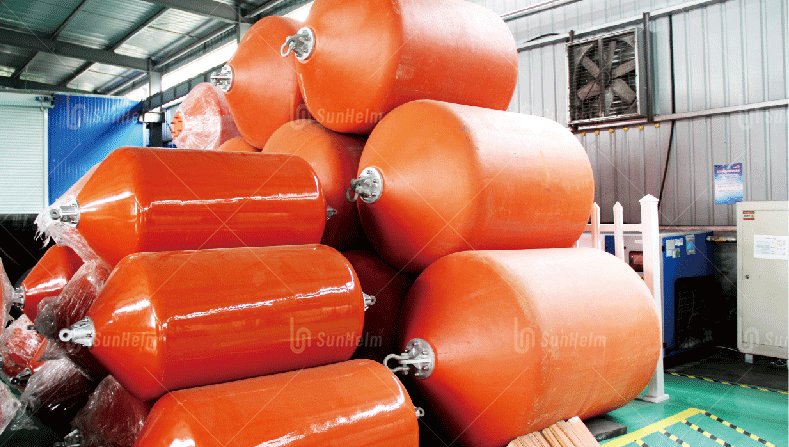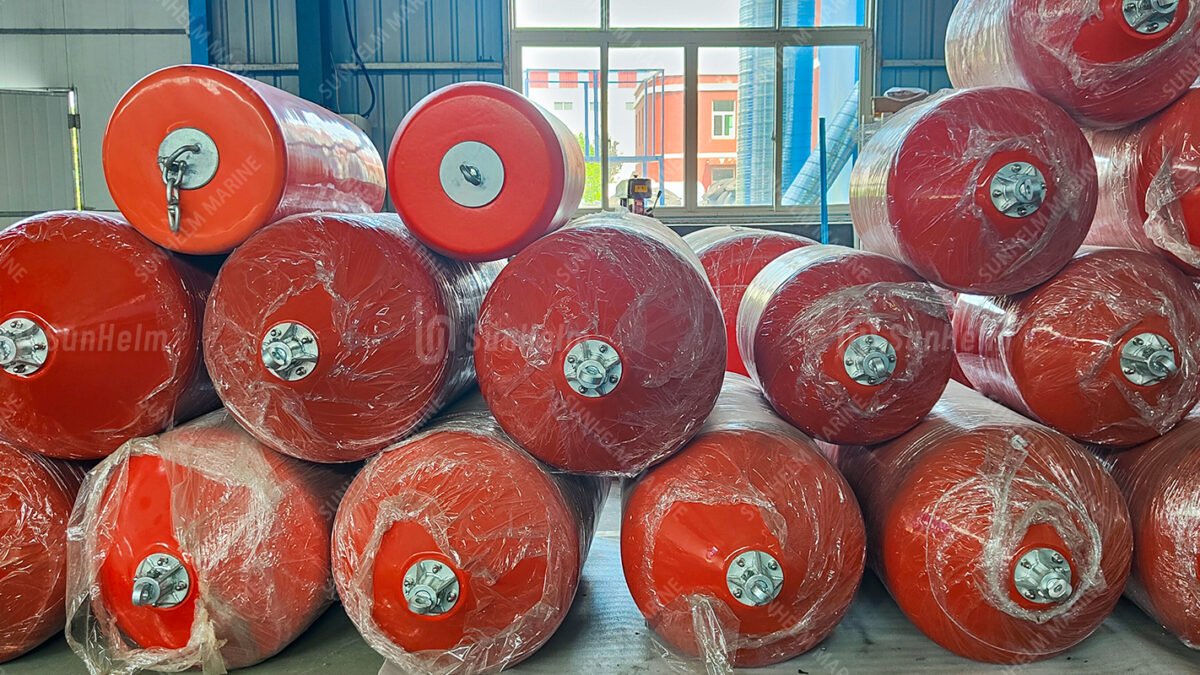When a ship meets a dock, every detail matters. Marine guard foam filled fenders give predictable, low-maintenance protection that dock designers trust. At Sunhelmmarine — a source factory with direct production control — we build foam fenders and foam filled fenders that protect hulls, piers, and cargo while cutting long-term cost and downtime.

Why dock designers pick marine guard foam filled fenders
- Fail-safe performance. Unlike inflatable systems, foam filled fenders keep their shape after damage. They absorb energy through controlled compression and then return to form, protecting both vessel and berth.
- Low maintenance. With no need for constant pressure checks or repairs from punctures, foam filled fenders reduce service work and unplanned outages.
- Stable contact. Foam fenders provide steady reaction force and good friction control, which helps prevent vessel drift and reduces side loads on mooring lines.
- Long service life. Properly designed and installed foam-filled units resist wear and keep working season after season, lowering life-cycle cost.
What makes Sunhelmmarine’s marine guard fenders different
We make foam fenders in our own factory, so you deal directly with the manufacturer — no middleman. That matters because:
- We control material selection and production steps from raw foam to outer skin.
- We can tailor hardness, size, and mounting options to match berthing energy, vessel type, and dock geometry.
- We run quality checks at every stage to ensure consistent energy absorption and reaction force across batches.
- We deliver technical drawings, load/energy guidance, and installation advice so your design team has what it needs to specify with confidence.

Design tips for dock engineers
- Match energy and reaction force. Calculate the berthing energy for your vessel mix and choose a fender size and shore plate that deliver the required energy absorption while keeping reaction forces within safe limits for your quay structure.
- Consider hull finish. Softer fenders protect painted or delicate hulls better. If a range of vessel types will use the berth, select a product that balances softness and longevity.
- Pick the right mounting. Fixed, sliding, or special bracket mounts change how the system reacts — we can supply custom mounting solutions from our factory.
- Plan spacing and redundancy. Proper fender spacing prevents concentrated loads and improves overall berth performance. Include spare units and an inspection plan for long service life.
Quick comparison — foam filled vs. inflatable
- Durability: foam filled fenders stay functional after puncture; pneumatics require repair.
- Maintenance: foam requires little routine work; inflatable fenders need regular pressure checks.
- Initial weight/installation: foam units are heavier and may need stronger fixtures; inflatable systems are lighter but need auxiliary equipment.
Dock designers often choose foam filled fenders where reliability and low lifecycle cost are priorities.
FAQ
Q: Are marine guard foam filled fenders suitable for large commercial vessels?
A: Yes. When sized and mounted correctly, foam filled fenders absorb high berthing energy and protect both large hulls and quay structures.
Q: How long do foam fenders last?
A: Lifespan depends on use and environment. With proper selection and regular inspections, foam fenders can serve for many years with minimal upkeep.
Q: Can you customize foam fenders for special berths?
A: Absolutely. As a source factory, Sunhelmmarine offers custom sizes, hardness options, and mounting solutions to fit special berthing needs.
Trust and next steps
Designers choose Sunhelmmarine because we make marine guard foam filled fenders at the source. You get factory knowledge, faster customization, and clear technical support. If you need energy curves, reaction force data, or drawings for your berth, we’ll prepare them to help you finalize the design and budget with confidence.
Interested in a quote or technical sheet? Contact Sunhelmmarine with your vessel profile and berth data — we’ll respond with sizing options and factory pricing so you can move from design to procurement quickly.


